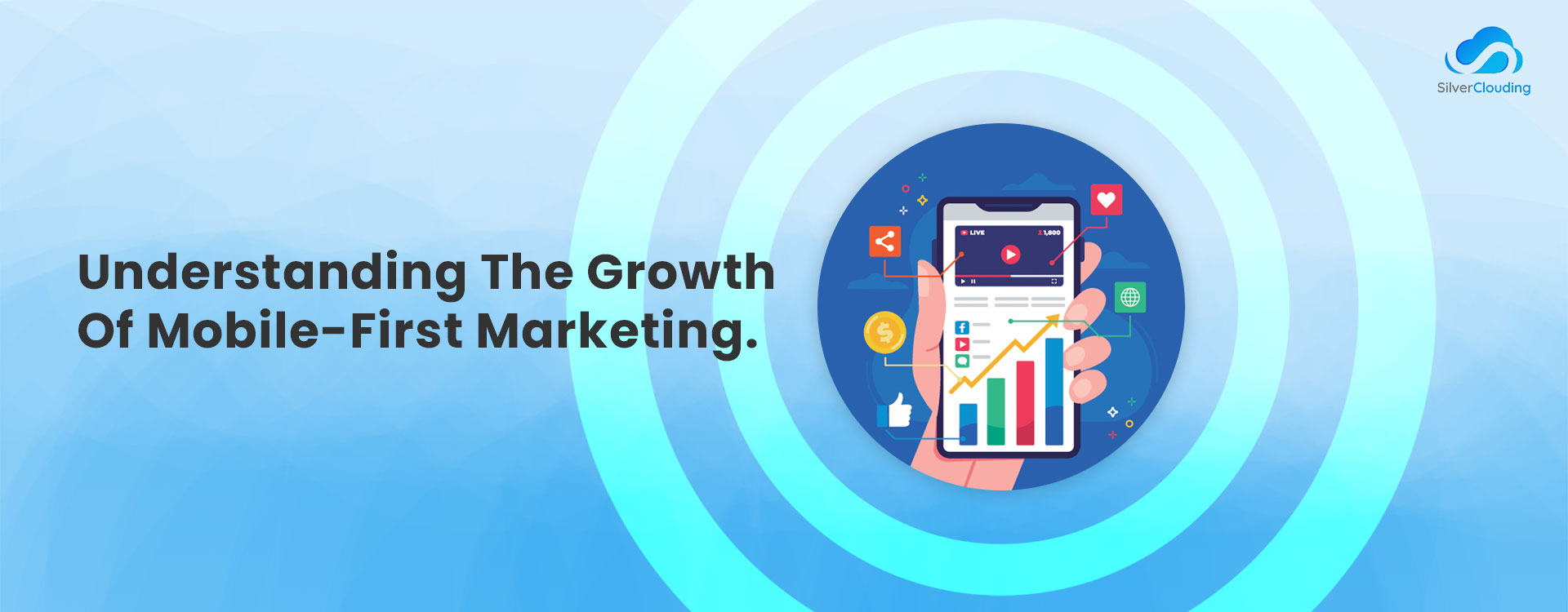A better way of being smarter
Can you believe that worldwide the Smartphone subscription passes more than six billion today? The true reality is that it will grow to more than several hundred billion in the forthcoming year. With this amplification, we can relate to users relying on their mobile phones for almost all their needs and specifications.
However, Smartphone users continue to increase at an annual rate of 3.5%, and current trends suggest that two-thirds of the world’s population should be online by the end of 2023.
What’s more, the coronavirus pandemic fabricates a substantial impact on internet user research, so actual user figures and growth rates may be higher than current data suggests.
Wondering what mobile-first marketing is? How does it work? What is the growth of mobile-first marketing? This blog will help you understand mobile-first marketing strategies and best practices.
What is mobile-first marketing?
Mobile first marketing is a multi-channel, digital marketing strategy aimed at reaching a target audience through smartphones, tablets, and other mobile devices, via websites, email, social media, and apps.Article Sponsored Find something for everyone in our collection of colourful, bright and stylish socks. Buy individually or in bundles to add color to your sock drawer!
In this digital aeon, brands are utilizing the power of apps that offer digital marketing support and solutions to grow their businesses. Branding, marketing, and advertising have always been the connecting way to the spectators in the right place and at the right time.
The booming e-commerce industry and the multitude of versatile applications are ushering in a new era of modern marketing. Apps are a useful tool to fuel business growth by helping a brand to create brand awareness and create an engaging audience. They also help with the execution of branding and ad campaigns.
How does it work?
The primary aspect of Mobile first marketing is the optimization of the websites for Smartphones. This includes designing and developing a website that is easy to scroll on the small screen and insure the loading speed of page load quickly through mobile networks. It also helps in creating mobile-specific content and marketing tactics, making reach thousands of people at a single click such as Social Media Marketing and SMS marketing where the target involves mass people.
The other aspect of Mobile first marketing is Creating a mobile App: Creating mobile apps to develop businesses is a way to engage with the customers and provide them with a more convenient way to access their products and services.
Mobile apps also businesses to create valuable data on consumer behaviour and consumer satisfaction which can further be used to tailor marketing campaigns and improve customer satisfaction.
What is the growth of mobile-first marketing?
Let’s glance statistics of mobile marketing here we go:
- We spend more than 3 hours a day on our phones.
- The vast majority of Facebook, Instagram, and Twitter Ad revenues come from mobile.
- Younger Peer group uses phones “Just to amuse themselves”.
- Looking at the new Peer group they use a phone to play games.
- More than half of the consumers go for online shopping rather than in-store shopping.
- Mobile commerce will represent one in 10 retail sales by 2025.
- Three-Fifth of the brand users uses a mobile app for brand shopping.
- Mobile advertising spending will surpass $339 billion by 2023
- 51% of ad spending will be on mobile and 49% on desktop in 2023
- 66.6 per cent of the global population uses a mobile device
- 280 million Americans (84.2%) use their phones to access the internet
- People in the US spend 49% of their phone time on social media apps
- More than 80% of internet users use Smartphones
- It’s estimated that 89% of total phone time is spent using an app.
- Roughly 51% of all web traffic is mobile
- 61% of website visitors won’t return to a website that isn’t mobile friendly
Conclusion:
Companies that want to be a good fit in this competitive market need to understand the importance of mobile-first marketing and implement strategies that prioritize the mobile user experience.
Consumers spend a huge amount of time on their phones. They use them to browse stores, access deals, and promotions and look for reviews associated with the product. And, during my study, I observed that they’re happier to convert on mobile than you might expect.
So whether you believe mobile marketing is a standalone “thing”, or is indistinguishable from any other digital channel, it’s clear that smartphones are now way more important for e-commerce brands.
And it’s only going to become more important in the upcoming aeon.
Reference:
https://www.luisazhou.com/blog/mobile-marketing-statistics
https://www.drip.com/blog/mobile-marketing-statistics





Chayan Biswas
Nice article. Keep it up!
Chayan Biswas
Thanks a lot.